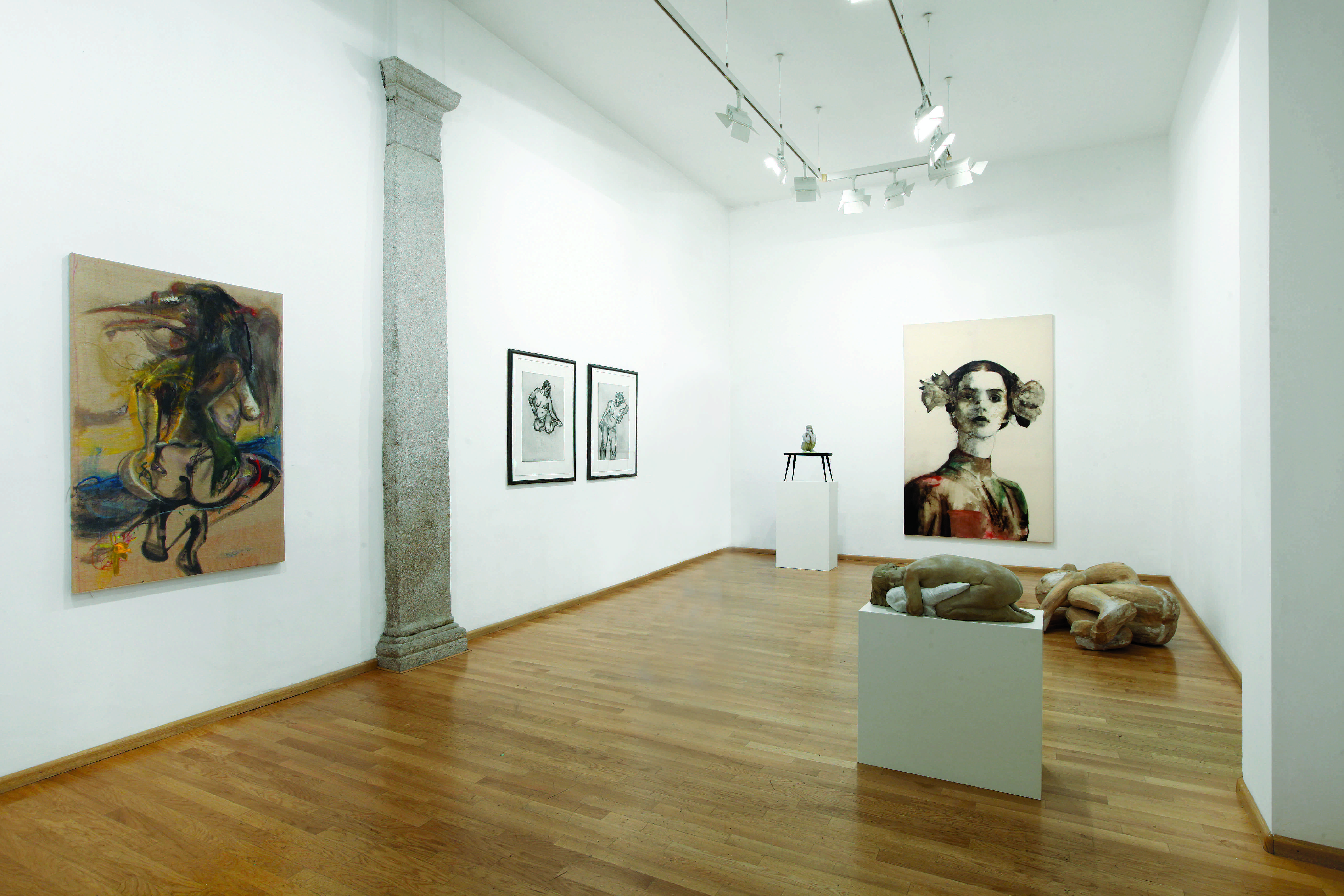
Muse inquietanti, ritratte da uomini inquieti
In that little masterpiece of synthesis and sentiments entitled Mr. Palomar, the writer Italo Calvino wrote: “The knowledge of fellow men necessarily demands the knowledge of oneself”. Regarding the theme of understanding oneself and others, the mysteries of empathy, identification and communication, anthropologists, sociologists and psychoanalysts have written an infinity of words. The history of art, however, has been equally eloquent. For example, the discipline of physiognomy from Aristotle to Leonardo for the first time linked the moral expression of a person to physical appearance, in every portrait revealing the person’s real identity – intimate and recondite – entrusted to the hands of an artist capable of depicting it by means of images.
However, in this process of interpretation and disclosing it turns out that the artist puts his own interpretation. He lets himself be involved by the ‘reading’ of the model to the point that at the end he sees himself reflected in the model, to the extent of projecting his own eyes in those of the model. There is a splendid sequence in the film by Kenneth Branagh of Shakespeare’s Hamlet, that of A Midwinter’s Tale, treating the staging of the play in an old local country church. Distraught and bewildered by the identification with the characters of the tragedy, the actors let themselves go and show themselves for who they really are, telling their private tragedies. One of them confesses to being unable to tolerate the interpretation because it is “too similar to reality”.
And so in a few words we have the explanation of an exhibition that in being concentrated on the empathetic dialogue between artists and models discovers the ability of each artist to know how to read the others from within, at the same time maturing what is latent in him. In short, to depict the faces of others means to a certain degree also portraying one’s own. Rembrandt docet. In fact, the genius of Leiden (1606-1669), the absolute protagonist of the Dutch Republic’s Golden Age, heads the list of artists who have autographed self-portraits, each time imagining himself to be in the shoes of somebody else – king or beggar, knight or vicar – although also grafting something of himself in the faces, the gestures and the expressions of his most recurrent subjects. Like Faust, the magician without a soul, who was also urged on in his mad search for knowledge. Or Jan Six, the melancholic-eyed friend of the painter whose identity is still uncertain. And his women. The wives, lovers and the nudes inside and outside his paintings or in the engravings as large as a bar of soap, though full of apprehension and mystery, refraction of an existential anxiety that broke his heart.
Many modern artists have measured themselves with the inheritance of this Rembrandt in the mirror, in their turn caged by a portrait that forced them to talk about themselves, to show themselves. Like Agenore Fabbri (1911-1998) who in his women with their black eyes and ripped bodies transferred all of the burden of the drama he lived during the war, deployed on the front of the Yugoslavian theatre. This was a devastating experience that on his eyes impressed the scenes subsequently sculpted by his hands in the tortured matter he used. For him the woman became a metaphor of the lability and oppression of a world that torments, never offering comfort.
Lucian Freud (1922-2011), the most famous from among the artists of British figurative painting who came after Bacon, was equally violent with other people and, in consequence, also with himself. However, and perhaps as a reaction to the psychoanalytic theories of his grandfather Sigmund, he concentrated on men and their most physical and carnal aspects. He thought it was a good antidote to the motions and doubts of consciousness although like some fat women spread out on the worn leather armchairs he fell heavily into the lucid representation of his phobias: the decadence of things, opacity and sex. Hence the forms that were out of scale, the unstable perspectives, the audacious foreshortenings and the contorted poses. A prisoner of narrow spaces or immersed in a vacuum, Freud’s women betray his difficulty to communicate and his solitude.
Something which to a certain degree is also true in the work by Gianfranco Ferroni (1927-2001), an absolute master of a tense, strident and dark painting like his black engravings, a real homage to the Dutch genius. Or those works by the painter Karl Plattner from Alto Adige (1919-1986) whose lean, angular female models with their tense cheek-bones and fingers as long as antennae reflected his state of permanent waiting and expectation, the sense of precariousness and the delusion of a life spent in transit, from one country to another during the years of World War II and the rift between German and Ladin linguistic islands. In his German approach, in his painting and his ‘sharp’ drawing which one would say was engraved with a knife, we perceive the same northern school of Georg Baselitz (born 1938). A master of a form of figuration made up of acidic tints and violent gestures which in his graphic work – like Plattner’s – gives body and soul to women whose forms appear as being severe, hard and chiselled in the wood of the xylography, cut out with black, irregular contours.
If Rembrandt’s lesson in these painters has left a profound sense of ‘shadow’ and confession, also contemporary artists have appropriated this legacy in the works and in the women subjected by their eyes and by their presence.
In the same way that Rembrandt loved and portrayed his wife Saskia, likewise Giuseppe Bergomi (born 1953) over the years has made his beloved Alma pose for him, almost as if she were a piece of him due to that empathy which has always bound him to her, and vice versa. Alma is the muse but also the mirror, the reflection of an intimate demand for order, rigour and transparency. Bergomi’s terra cruda is in fact a perfect mixture of rigour and transparency because it reveals the nature of its author… and of his love. The results obtained by Giovanni Sesia (born 1955) are more anxiogenic. With a mingling of photographs, painting and words he entrusts his story to long sentences transcribed on the naked skin of the subjects, on film and on paper, as the beautiful Nagiko did in the splendid and tragic film The Pillow Book by Peter Greenaway, tattooing poems on her body, as painful as the wounds.
Inspired by the eroticism of the women by the artist from Leiden, “bathed by the very light of his thought”, to quote Marcel Proust, also Domenico Grenci (born 1981) has “bathed” with light the faces stolen from the pages of newspapers. These are icons of a fragile and transient world which in the canvases yellowed by bitumen sink into an arcane past, into ancient memories and personal recollections which have the ‘savour’ of a déjà vu, eyes met by mistake, already seen and deposited in his thought, as Proust wrote. A feminine imaginary that is very different – albeit equally troubled – from that seen in the work by the Polish artist, Sylvester Ambroziak (born 1964), who seems to sculpt his harsh and rugged forms in wood using a hatchet in order to communicate the anger of creatures in search of a lost identity. Although above all different from the work by Marco Rufo Perroni (born 1970) who has united his bestial universe and the sign of an angry painting with a certain sort of surrealism, with visions hanging in balance between dream and reality. For him the woman is not a memory that has faded with time but is planted on the ground with talons. She is feral and sullen. Like him, she is afraid of light, she takes refuge in shadow, turns her back, and sooner or later goes away.


